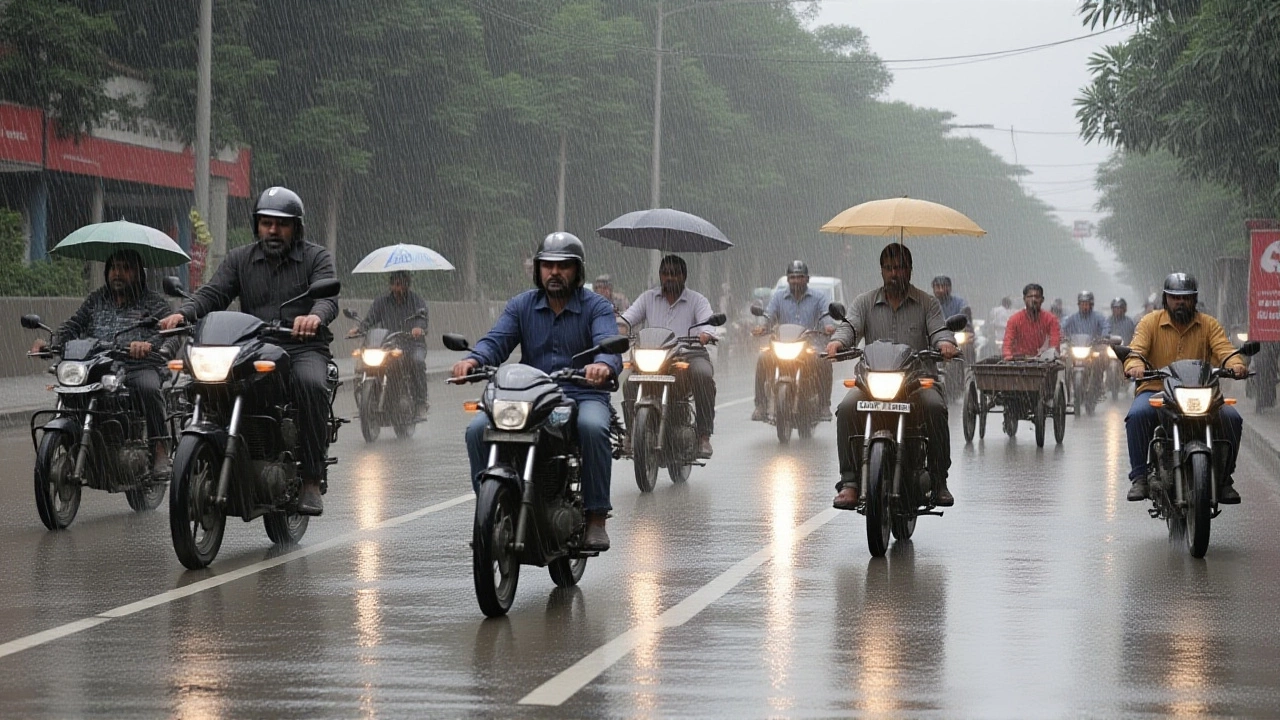Bihar Rainfall: Latest Updates and What It Means for You
Each year Bihar sees big swings in rain, and those swings decide how farmers plant, how roads hold up, and whether festivals get postponed. If you live in Patna, Purnia, or the river valleys, the amount of rain this season can change everything from your commute to your grocery bill. That’s why keeping an eye on Bihar rainfall data matters for anyone who calls the state home.
Rainfall in Bihar is measured in millimetres and reported by the India Meteorological Department (IMD). The agency updates its figures twice a day, pulling data from over 30 weather stations across the state. When you see a headline about "above‑normal" rainfall, it usually means the recorded numbers are higher than the long‑term average for that month.
Current Rainfall Situation
As of the latest update, eastern districts like Bhagalpur and Katihar are seeing 120‑150 mm of rain this week, while western areas such as Muzaffarpur sit around 80 mm. The monsoon front moved in early June and has been pushing eastward, bringing heavier showers to the Ganges basin. This pattern is typical for a June‑July monsoon, but the early start has raised concerns about possible flooding in low‑lying regions.
Flood‑prone zones along the Kosi and Gandak rivers are already reporting water‑level rises above safe limits. Local authorities have issued warnings for villagers in those districts, urging them to move valuables to higher ground. If the rain continues at this rate, you can expect more road closures and delayed train services, especially on routes that cross the rivers.
How Rain Affects Daily Life in Bihar
For farmers, rainfall is a double‑edged sword. Moderate rain recharges groundwater and fills irrigation channels, but too much can wash away seedlings and delay sowing. The current forecast suggests that the next ten days will bring scattered showers, giving farmers a chance to harvest early‑planted rice without risking a water‑logged field.
Urban dwellers feel the impact through traffic snarls and power outages. Heavy rain often clogs drainage systems, turning streets into temporary streams. To avoid getting stuck, many commuters now leave home earlier or use alternate routes that skirt flood‑prone neighborhoods.
Health officials also keep tabs on rain because standing water can breed mosquitoes, increasing the risk of dengue and malaria. Simple steps like clearing stagnant water from containers and using mosquito nets can lower that risk.
If you’re planning an outdoor event—whether a wedding or a local market—checking the latest Bihar rainfall forecast is a smart move. The IMD provides a 7‑day outlook that shows whether you should expect light drizzle, moderate rain, or heavy downpours. Adjusting your schedule based on that outlook can save you a lot of hassle.
In short, Bihar rainfall isn’t just a number on a screen; it shapes agriculture, travel, health, and even the mood of a community. Staying updated with reliable sources, planning ahead, and taking simple protective measures can turn a rainy season from a challenge into a manageable part of daily life.
IMD warns heavy rain, hail and 21 cm downpours across north India during Dussehra, impacting travel, festivals and daily life from Oct 5‑7, 2025.
Oct, 2 2025
